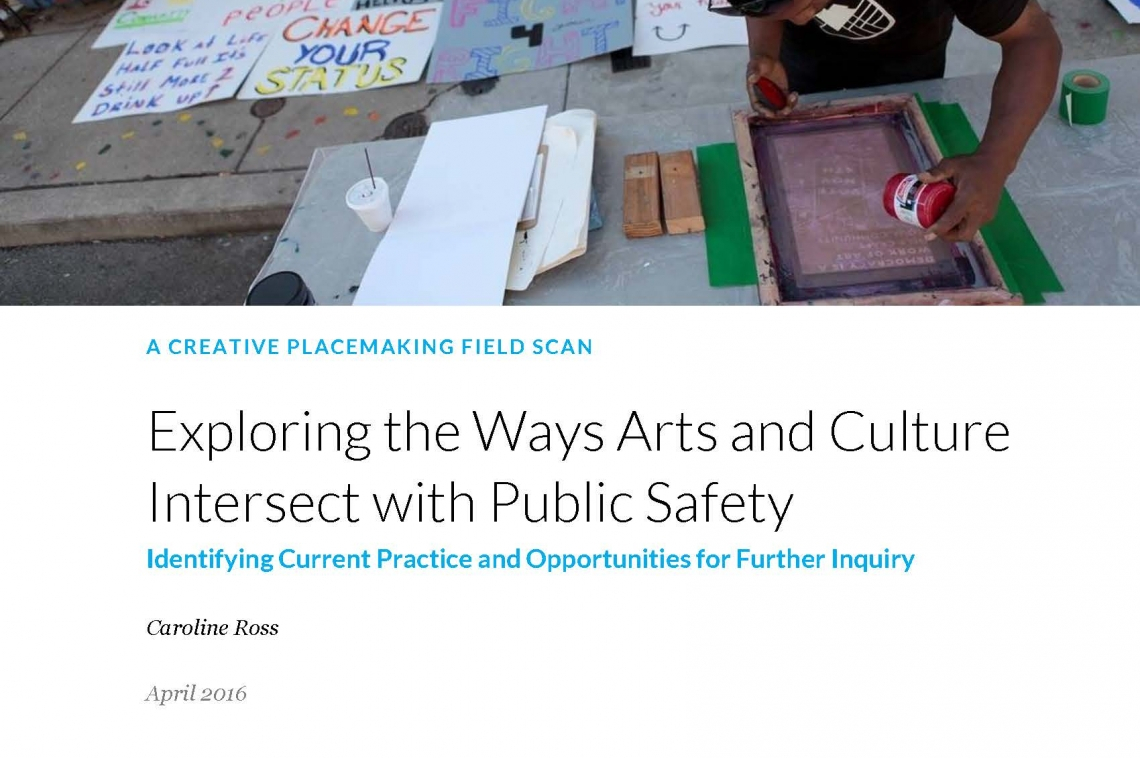
As a core part of ArtPlace’s research agenda, we are taking each of the discrete sectors of community development, one at a time, and exploring how arts and cultural practitioners have and might be partners in helping to achieve their goals.
Today marks the release of the first two “field scans” that ArtPlace America has commissioned to begin this work—one focused on public safety, written by Caroline Ross at the Urban Institute, and the other focused on housing, written by urban planner and researcher Danya Sherman. Each represents an exploratory first step that aims to surface:
- Key goals or needs in that community development sector that arts and culture might address,
- A typology or framework for understanding the ways that arts and culture has and might partner with that community development sector,
- Barriers to integrating arts and culture within that community development sector, and
- Strategies or tactics to advance collaborations with arts and culture in that sector.
The field scans address two primary audiences: artists and other arts and cultural practitioners seeking to better understand and collaborate with a particular community development sector; and community development practitioners who are interested in how arts and culture might further their work. Our goal is for these two audiences to develop a shared language and a collaborative set of goals, so that ultimately communities will benefit from the powerful, cross-sector synergies that we know to be a signature characteristic of creative placemaking work.
From the outset we have referred to this work as the “translating outcomes” portion of our broader research agenda. And as I have written here recently, the field scans are not an end product in and of themselves, but rather an initial inquiry that will inform several aspects of ArtPlace’s work.
We’ve recently kicked off two working groups – one focused on public safety and one focused on housing – tasked with taking the field scan analyses and findings even further. We will be collaborating with working group members in the coming months to identify the best practices that warrant formal case studies, key methods for evaluating success, and strategic framing of the material in a way that resonates with those most likely to take up creative placemaking practice in other sectors.
In the meantime, however, we are eager to share the initial findings with our community of practitioners and other colleagues. Both Caroline and Danya were tireless in their effort to capture the voices and insights of artists and community development professionals working at these intersections, and we would love to hear whether we’ve framed the work a way that resonates or benefits your practice. View or download the field scans below:





